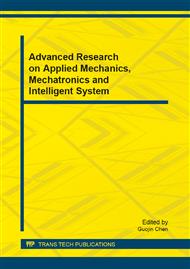p.61
p.66
p.70
p.75
p.83
p.93
p.99
p.103
p.107
Study on Deloading Properties of Perforated Sound Barriers
Abstract:
Based on the 3D unsteady incompressible Navier-Stokes equation and the turbulent model of k-ε two equations, the processes of electric multiple units CRH380B passing by sound barriers installed on viaducts at the speed of 350 km/h were numerically simulated by finite volume method. The aerodynamic impulse pressure on sound barriers was analyzed. The distribution of impulse pressure on perforated sound barriers was compared with that on those with no holes. Effects of the shape, the size, the density, and tilt angle of the holes on deloading properties of perforated sound barriers were investigated. The numerical results show that the deloading properties of perforated sound barriers with circular holes are similar to those with square holes. The holistic distribution of impulse pressure on perforated sound barriers is similar to those with no holes. The density increases in two different directions has almost the same influence on the deloading properties. Deloading properties of perforated sound barriers become worse when tilt angle of holes increases.
Info:
Periodical:
Pages:
83-90
Citation:
Online since:
July 2013
Authors:
Price:
Сopyright:
© 2013 Trans Tech Publications Ltd. All Rights Reserved
Share:
Citation:


